The Community of Dentistry

Trends in Malpractice
Embracing Trauma
Attaining Financial Fitness


The Community of Dentistry

Trends in Malpractice
Embracing Trauma
Attaining Financial Fitness

Co-Editors
Amisha Singh, DDS; Allen Vean, DMD
Creative Manager Little Red Swing • littleredswing.com
Managing Editor Cara Stan
Printing
Dilley Printing
MDDS STANDING OFFICERS
President Karen Foster, DDS
President-Elect Susan Kutis, DDS
Treasurer Bryan Savage, DDS Secretary Angelica Seto, DDS
The Articulator is published quarterly by the Metropolitan Denver Dental Society and distributed to MDDS members as a direct benefit of membership.

Editorial Policy
All statements of opinion and of supposed fact are published under the authority of the authors, including editorials, letters and book reviews. They are not to be accepted as the views and/or opinions of the MDDS. The Articulator encourages letters to the editor, but reserves the right to edit and publish under the discretion of the editor.
Advertising Policy
MDDS reserves the right, in its sole discretion, to accept or reject advertising in its publications for any reasons including, but not limited to, materials which are offensive, defamatory or contrary to the best interests of MDDS. Advertiser represents and warrants the advertising is original; it does not infringe the copyright, trademark, service mark or proprietary rights of any other person; it does not invade the privacy rights of any person; and it is free from any libel, libelous or defamatory material. Advertiser agrees to indemnify and hold MDDS harmless from and against any breach of this warranty as well as any damages, expenses or costs (including attorney’s fees) arising from any claims of third parties.
While this might sound odd to say, I cannot believe we are at the beginning of the end. In July 2024, I will have served all the potential leadership roles within MDDS and the CDA, I am honored by this opportunity and vow to do my best for you as President of MDDS. As President, I hope to expand on leadership development opportunities for the Board of Directors and any interested members. In addition, I am looking forward to the 2024 Rocky Mountain Dental Convention (RMDC) January 18-20. Even over the summer, the planning process is well underway. We have incredible education planned, new features in the Expo Hall as well as fun new social events—including the Mile High Party to kick things off. I cannot wait for you to get your registration materials and see all the amazing education and fun to be had. Let’s make this the highest-attended convention in recent history.
What else is ahead for the remainder of 2023 and into 2024? The MDDS calendar is full of great continuing education programs and social events. Including socket grafting and laser courses and fun social events.
All of our education events are held at the Mountain West Dental Institute (MWDI). Did you realize as a member, you are eligible for a discounted rental rate at MWDI? If you have an event or study club you need space for, reach out to Jill Kingen on the MDDS Professional Team at events@mddsdentist.com. The influence of MDDS is also being felt nationwide. We’re so proud of MDDS member Dr. Brett Kessler who is running for President-Elect of the American Dental Association (ADA). We hope to host a victory party at MWDI for him after the election in October. He is very appreciative of the campaign donation and support received from MDDS thus far. He has always been a proud member and volunteer. If you are friends with Delegates from other states, feel free to reach out to them, tell them about Dr. Kessler and ask for their vote. To learn more about Brett, check out his website at bikodds.com.

As faculty at the Denver Health Pediatric Dentistry Residency and Internship, I find myself joking often about dinosaurs roamed the Earth when I was in residency. Since that time I have served in 25 different volunteer roles at
MDDS, CDA and ADA and have seen many ebbs and flows in member involvement along the way. I want to encourage your participation and involvement in any and all levels of the tripartite. I can assure you that you will be welcomed by a group of volunteers and team members who are working their hardest to make the dental profession and our organization the best it can be.
Let us make our collective voice heard to spread the word about organized dentistry. I would love to hear from you and what MDDS means to you. For me, MDDS has been a place to grow my leadership abilities, expand my public speaking skills (I used to have out-of-body experiences when speaking in front of large groups and could not remember what I had said), and a place to make lasting friendships. Most importantly, MDDS was a caring resource when I lost my associate to suicide. One of my mentors through the Society could relate as he had experienced the same early in his career. That connection was so meaningful, and I would not have had that without MDDS. I encourage you to reach out to me directly if you have a story to share or any suggestions. My cell is (303) 883-3464 and email is kdfdoc@gmail.com. I also ask you to contact me if you are interested in volunteering with organized dentistry. I would be delighted to answer any questions you may have about a particular role or make any professional connections.
I look forward to seeing you at our upcoming social events or even in the board room soon. Cheers!
KAREN FOSTER, DDS PRESIDENT, MDDS
KAREN FOSTER, DDS
"I want to encourage your participation and involvement in any and all levels of the tripartite. I can assure you that you will be welcomed by a group of volunteers and team members who are working their hardest to make the dental profession and our organization the best it can be."


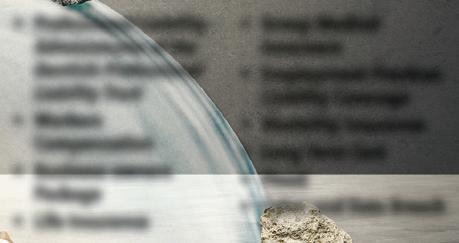


Community. When you read this word, what do you think about? Some of us imagine our families, the hands of our loved ones, the eyes of our children. Some of us think about the people in our neighborhood, the smiles of old acquaintances, the sounds of the homes we grew up in. Some of us think about our peers, the people we work with, the team that helps us grow in our professional lives. “Community is both a feeling and a set of relationships among people;”1 community is something you perceive and understand through emotion and is ultimately about the people. The person that you become is an amalgamation of the people you surround yourself with. Jim Rohn once said, “You’re the average of the five people you spend the most time with.” A related idea is “show me your friends and I will show you your future.” Ultimately the message is the same: your community shapes you in nuanced and persistent ways.
The power of relationships is pervasive, compelling and undeniable. Nicholas Christakis, a physician and social scientist, talks about this power in his TED talk entitled, The Hidden Influence of Social Networks.2 The findings of his research are astounding: “if a friend of yours becomes obese, you yourself are 45 percent more likely than chance to gain weight over the next two to four years.” More surprising, however, Christakis and Fowler found that if a friend of your friend becomes obese, your likelihood of gaining weight increases by about 20 percent—even if you don’t know that friend of a friend. The effect continues one more person out. If a friend of the friend of your friend develops obesity, you are still 10 percent more likely than random chance to gain weight as well.”3 Similar findings exist with the propensity for smoking, emotional exhaustion, depression, and even, likelihood of death. Christakis discusses three theories of why social networks tend to cluster: “induction, which is similar to contagiousness, spreading influence; homophily, where similar demographics group together; and confounding, where people with similar experiences unite.”4
The day we got the fateful and long-awaited admissions call from the dental school we ended up choosing, we were handed admittance into the community of dentistry; that is exactly what this profession is: a community, a network of people, national and perhaps even global, connected through relationships. When we see the world of dentistry as a community, we see similar patterns of social networking.
Ideas spread like wildfire through our profession. For example, cone beam computed tomography (CBCT) technology was first developed in the late 1990s and now, less than 25 years later, over 86% of surveyed American Academy of Endodontics (AAE) members have a CBCT in their office. 72% of surveyed American Dental Association (ADA) members either have a CBCT in their office or have access to one in their area.5 In less than one generation of practicing dentists, we have normalized the use of technology that is transformative to patient outcomes. It is rare to see that agility in professional groups, especially ones as grounded and historic as dentistry. This is not the only pivot our profession has made: we have seen similar trends in digital radiology, scanning and milling, the use/disuse of certain dental materials and more. We are a profession that can change readily and adapt quickly, and this is, in part, due to the relationships we foster.
The need for human connection is innate and universal, and this could not be truer for the dental community. As professionals who often practice in silos (although this is rapidly changing), we have found several ways to foster a sense of community and create strong professional networks. Not only have we created groups that are functional “affinity spaces” for different generations (i.e. New Dentist Committee), people with similar interests (i.e. study clubs), and people with similar passions (i.e. advocacy within organized dentistry or honor societies like ACD), a number of different sub-groups and sub-cultures have emerged as dental professionals specialize and congregate around specific interests, techniques, or areas of expertise, such as airway, orofacial pain or cosmetic dentistry. The emergence of social media has accelerated this and allows us to create even more specialized groups in which we can share our passion for dentistry with people who have very similar life experiences (i.e. Mommy Dentists in Business).
These smaller communities within the dental profession often foster a sense of camaraderie and mutual support among like-minded practitioners. Subgroups might form based on dental specialties or interests, and become a place where practitioners share advanced skills and knowledge within their niche. Additionally, sub-cultures can develop around specific treatment methodologies, schools of thought or training, dental technologies or particular patient populations, further enriching the profession's collective knowledge and fostering innovation to expand access and quality of care. Collectively, this fuels our profession forward.
No one will argue the value community brings to dentistry, for the individual practitioners and the collective profession alike. But it is important to note the presence of these social networks also has the potential to create unintended phenomena as well. Just as we have the ability to transmit new and productive ideas, and incubate transformation and innovation in like-minded groups, we also have the potential to transmit bias, form echo chambers, and unintentionally propagate groupthink in professional silos. For example, this is a profession where 18% of dental students indicate they plan on working in a DSO (Dental Support Organization) immediately after graduation6 , and where 20% of dentists under the age of 34 are supported currently by DSOs.7 Despite these facts, a 2017 survey indicated that 77% of the dentists surveyed believed that DSOs “had a negative effect on dentistry.”8 I do not believe any of these surveyed dentists would have intentionally undermined the ethics or practice philosophy of their colleagues, but when we subconsciously remove people from a group, we have the potential to dehumanize and lean into bias, which then becomes dangerous territory.
Psychological isolators such as “groupthink” and the formation of echo chambers can have detrimental effects on decision-making and the open exchange of ideas. In communities like these, individuals may prioritize consensus over critical thinking, leading to a stifling of alternative viewpoints and potential blind spots. Similarly, echo chambers occur when individuals surround themselves with like-minded people, reinforcing their existing beliefs and shielding them from diverse or evolving perspectives. Within the industry, this can lead to a lack of innovation, poor decision-making, the propagation of misinformation, and perhaps most dangerously, the anchoring of exclusion and a lack of belonging for certain groups of people.
So how can we, as a profession, use the power of community to push our industry forwards, while still actively promoting an open and inclusive culture that encourages diverse opinions and constructive dissent? It is imperative to build spaces where people feel safe to challenge prevailing ideas and express different viewpoints, to tell their stories and know they will be heard in an environment of openness, validation and intellectual curiosity. We must tell our stories and hear the stories of others. The communities we have created have value, but pushing for interdisciplinary collaborations and seeking input from professionals outside our immediate practice modality can also help in gaining fresh insights and avoiding insular thinking. The most essential piece of the right balance between support and growth is individually, actively engaging in self-awareness and being open to understanding our own implicit biases.
We have formed strong communities and their fabric is creating a new foundation for our profession. Using these communities, if we intentionally listen to understand, we may encourage a healthier exchange of ideas that will transform the future of dentistry.

1. https://ssir.org/articles/entry/what_is_community_anyway
2. https://www.ted.com/talks/nicholas_christakis_the_hidden_influence_of_social_ networks?language=en
3. https://medium.com/the-mission/youre-not-the-average-of-the-five-people-you-surroundyourself-with-f21b817f6e69
4. https://blogs.cornell.edu/info2040/2015/09/25/the-hidden-influence-of-social-networksnicholas-christakis/
5. https://apps.dtic.mil/sti/trecms/pdf/AD1186387.pdf
6. https://www.adapracticetransitions.com/blog/to-dso-or-not-to-dso-that-is-the-question
7. https://adanews.ada.org/ada-news/2022/march/main-types-of-dsos/
8. https://www.dentalproductsreport.com/view/dentists-hold-negative-view-of-dsos-survey-shows
“The day we got the fateful and long-awaited admissions call from the dental school we ended up choosing, we were handed admittance into the community of dentistry.”
We’re
confidence and exceed your expectations with our personalized
DenteVita provides quality, personalized patient care with the expertise of a seasoned Prosthodontist. With DenteVita and Dr. Aldo Leopardi, Prosthodontist, you can expand your practice and trust that your patients will receive the highest level of individualized care.
Dr. Leopardi is the founder of DenteVita Prosthodontics. His focus is to provide functionally driven aesthetic solutions to patients requiring tooth borne fixed, removable, aesthetic and implant supported dentistry.
From single tooth to complete rehabilitation and over 30 years of experience, you will be assured that your patients are in the best care of a skilled professional.
7400 East Crestline Circle, Suite 235 Greenwood Village, Colorado 80111 P. 720.488.7677 // F. 720.488.7717
Topic: Highly Esthetic Implant-supported Restorations with CADCAM: An update on the latest materials, workflows and techniques for 2023.

April 20, 2023 - Sang J. Lee, DMD, MMSc



Topic: Fixed implant rehabilitation and implant occlusion
June 8, 2023 - Miguel D. Vidal, DMD, MS
September 7, 2023 - Yong-Han Koo, DDS
Topic: Robotics in Dental Implant Surgery: Safety & Precision
sharing and learning with your peers CELEB R ATING D I S C
October 5, 2023 - Paul Chang, DDS
Topic: Management & Prevention of Peri-Implant Diseases
20 YEARS https://disc.events
November 2, 2023 - Aldo Leopardi, BDS, DDS, MS, Prosthodontist

Topic: “Back to the Future”: a retrospective look at dental implant clinical complications and successes, with a view toward the future.

December 7, 2023 - Marcus Blue, DDS
REGISTER TODAY! DISC IS POWERED BY DENTUTOPIA Approved PACE Program Provider || FAGD/MAGD Credit Approval does not imply acceptance by state or provincial board of dentistry or AGD endorsement. 1/1/2022 to 12/31/2023 Provider ID# 217950 Continuing education credits are available. (Total of 15.75 hours of AGD PACE credits)

INTRODUCING THE 2023-2024 MDDS BOARD OF DIRECTORS!
Dr. Charles Alexander
Dr. Jesse Andrews
Dr. Georgann Apgar
Dr. Lobna Banimostafa
Dr. Amishka Bantho
Dr. Jeffrey Birg


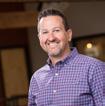
Dr. Benjamin Bright
Dr. Isaura Concepcion
Cirilla
Dr. Julie Devlin

Dr. Kacie Jo Dillow


Dr. Ankush Duggar
Dr. Vandana Duggirala
Dr. Katelyn Fleming
Dr. Makenna Fopma
Dr. Dustin Ford
Dr. Chaitanya George
Dr. Jeffrey Gius
Dr. Jack Hadwin
Dr. Zachary Hernann

Dr. Madison Hobbs
Dr. Kenny Huynh
Dr. Dominic Italia
Learn more about volunteering with MDDS at mddsdentist.com/volunteer/get-involved.
TRAILS & ALES HIKE
This July, MDDS members, their guests and furry friends escaped the heat of the city and enjoyed a guided hike at Alderfer/Three Sisters Park followed by lunch and brews at Campfire in Evergreen, CO at the annual MDDS Trails & Ales Hike.

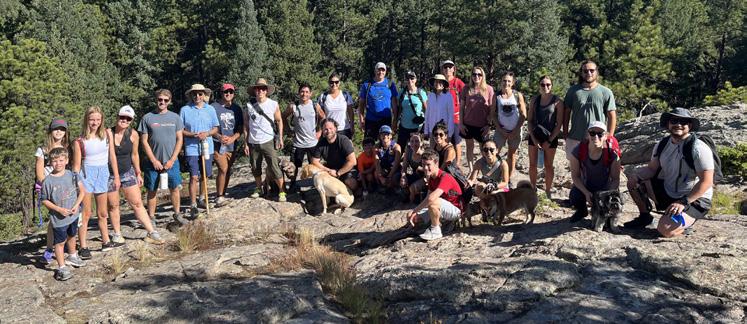
Dr. Hannah Jenkins
Dr. Patrick Jones
Dr. Venkata Naga
Sravanthi Johnalagadda
Dr. Jourdan Kidd
Dr. Malgorzata Korosciel
Dr. Amelia Kraft
Dr. Lincoln Kwasney
Dr. Faraj Mahchi
Dr. Michael McGregor
Dr. Jacqueline Merz
Dr. Nicholas Mohney
Dr. Yalda Nazeri
Dr. Bao-Chi Clara Nghiem
Dr. Phat Huu Nguyen
Dr. Dina O’Brien
Dr. Daniela Ortiz
Dr. Sunaina Puri
Dr. Cierra Randall
Dr. Brendan Reich

Dr. Juan Rodriguez
Dr. Brittyn Rushing
Dr. Tarun Sachdeva
Dr. Kaysha Sadek
Dr. Courtney Santistevan
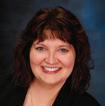
Dr. Akshay Shah
Dr. Lindsey Shall
Dr. Mohita Sharma
Dr. Cameron Shepherd
Dr. Jordan Sillman
Dr. Marsha Sonaty
Dr. Caitlyn Steinwachs

Dr. Andrew Stubbs
Dr. Suchitra Suresh
Menon
Dr. Tanner Swanson
Dr. Andrew Taylor
Dr. Jacob Taylor
Dr. Geraldine
Tellbuescher
Dr. Nick Torrence
Dr. Trang Trang
Dr. Ginneth Trujillo
Dr. Anelise Westermeier
Dr. Manisha Wohlford



We evaluated malpractice payments and adverse actions across all health professions in the state of Colorado - we have applied our knowledge of studying malpractice in other states and other professions to the state of Colorado. Throughout evaluation, we define medical malpractice as professional negligence by act or omission. Adverse actions are actions administered by boards of registration in a health profession against a provider. The purpose of this study is to understand trends in malpractice payments and adverse actions in all health professions in Colorado during the period 1990 to 2022. For this study, various health professionals have been categorized into six groups i.e. Physical healthcare workers (Chiropractor, Optometrist, Podiatrist, Technician and Assistant), Nurses (Physician assistant, Advanced practice nurse, Registered nurse, Practical nurse, Nurse Para-professionals), Mental healthcare workers (Psychologist, Social worker, Therapist and Counselor), Pharmacists, Dental healthcare workers (includes dentist, hygienist, dental assistant) and Physicians (includes MD and DO).
MHAY S, NAIR N, RAY B, VASUDEVAN P, GHATALIA P, KANWAL BUSHRA, NALLIAH, RPThis is a retrospective study that utilizes the National Practicing Data Bank (NPDB) database for the period of 1990-2022. This information was exported to a data visualization tool and trends were studied. The University of Michigan Medical School’s Committee on Human Subjects research evaluated our study and deemed it “not regulated” (HUM00116742).
During the study period, a total of 29,862 adverse actions and 5,608 malpractice payments were reported among all healthcare professions in Colorado. The highest number of adverse actions were against Nurses with 14,787—they were also subject to 353 malpractice payments. Physical healthcare workers had 1,875 adverse actions against them, and they were subject to 282 malpractice payments. The group with the second highest adverse action reports against them were Mental healthcare workers with 4,920. The malpractice payment against them remained constant for the past few years with only 3 malpractice payment reports in 2022. Pharmacists reported the lowest number of adverse action reports with 1,344. It is the only health profession in Colorado where adverse actions reports consistently declined since 2009. Malpractice payments against them have been zero since 2018. The highest number of malpractice payments were made against Physicians (DO and MD) with 3,946 malpractice reports and 4,299 adverse action reports. For the Dental profession (Dentist, Dental Assistant, Hygienist), 2,430 adverse actions were administered and there were 827 malpractice payments.

In the current study, we found that the adverse actions administered by boards of registration for all healthcare professions has been increasing during the period of the study. During the same period, the number of malpractice payments is decreasing which indicates an inverse relationship. We found the increasing engagement of boards of registration to penalize clinicians seems to have been contributing to a fall in malpractice payments. A better understanding of processes around adverse actions administered in Colorado may be valuable in reducing malpractice payments in other states.
A malpractice payment is described as a monetary exchange as a result of a settlement or judgment of a written complaint or claim based on an alleged failure of a licensed individual to provide adequate health services. Such an infringement may include the filing of a lawsuit in any state or federal court or other adjudicative body.1 Adverse actions report format is used to submit actions taken against a health care practitioner, entity, provider or supplier. This can include loss of clinical licensure, loss of Drug Enforcement Administration (DEA) prescribing privileges, health and human services exclusion by the Office of the Inspector General, exclusion from Medicare or Medicaid or other federally funded programs and cancellation of clinical privileges and panel membership. Malpractice payments and adverse actions are both reported to the National Practitioner Data Bank (NPDB), a web-based repository of information on medical malpractice payments and certain adverse actions related to healthcare practitioners, providers and suppliers. The NPDB was implemented in 1990 under the Health Care Quality Improvement Act, which enabled data collection and release of information related to the professional competence and conduct of all healthcare practitioners. Medical malpractice is the third leading cause of death in the US, only behind heart disease and cancer.2 Error rates are significantly higher in the US than in other developed countries such as Canada, Australia, New Zealand, Germany and the United Kingdom.2 Approximately 20,000 malpractice cases are filed in the US each year.3 According to the NPDB, the average payment for a medical malpractice claim in the United States was approximately $300,000 in 2020.4
The US has one of the highest costs of healthcare in the world and, according to the American Medical Association (AMA).5 In 2021, US healthcare spending reached $4.3 trillion, which averages to about $12,900 per person.6 Fear of malpractice has been seen as one of the contributors to higher healthcare costs due to overuse of healthcare services.7 This fear of lawsuits, litigation and regulatory challenges can cause healthcare professionals to practice what is often described as ‘defensive medicine’. It may cause healthcare professionals to use excessive
procedures, testing and referrals to reduce the perceived malpractice risk. Studies have estimated the cost of ‘defensive medicine’ to be around $100180 billion per year.8,9 According to a survey of dentists, mainly general dental practitioners, defensive behavior was found to be very likely in dental practice.10 These included unnecessary referral to specialists especially for difficult patients and carrying out treatments at their patient's request even if they were professionally deemed unnecessary. The adverse effects of defensive medicine are not limited to the increased cost of healthcare but also affect the overall quality of the healthcare system.11
Medical malpractice litigation is a controversial and complex issue that has implications for patient safety and healthcare quality. Medical malpractice litigation occurs when a patient sues a healthcare provider over an allegation of professional negligence. Professional negligence occurs when a healthcare provider fails to meet the standard of care and causes harm to a patient. This can include errors, omissions, misdiagnoses, delayed diagnoses, improper treatments or failure to obtain informed consent. The medical malpractice litigation system aims to compensate injured patients for their losses and to deter substandard care by holding providers accountable for their actions. However, the effects of medical malpractice litigation on patient safety and healthcare quality are unclear and disputed. Some argue that medical malpractice litigation promotes patient safety by creating incentives for providers to improve their performance and avoid errors.11 Others contend that medical malpractice litigation undermines patient safety by inducing defensive medicine, discouraging error reporting, increasing stress and burnout and reducing access to care.13
The aging population in the US is projected to continue rising, reaching 20% above age 65 by 2030, which is expected to increase healthcare costs.6 As older adults may have more comorbidities and take more drugs, research suggests that the risk of medical injury is higher.15 Failure to meet patient expectations or to disclose a medical error can lead to a higher likelihood of a claim.16 Although only a very small percentage of paid malpractice claims in the US are judged in court, several characteristics differ between settled and judged claims. Such differences may influence perceptions of malpractice risk and future reform efforts.17
Although the basic definition of medical malpractice is relatively uniform across the country, the process involved in seeking compensation for it is not. Different states have passed different laws on when and how victims of medical malpractice can pursue claims. According to the National Conference of State Legislatures (NCSL),18 the summary of damage provisions for Colorado states: “the total amount recoverable for all damages for a course of care for all defendants in any civil action for damages in tort brought against a healthcare professional, or as a result of binding arbitration, whether past damages, future damages, or a combination of both, shall not exceed $1 million, present value per patient, including any claim for derivative noneconomic loss or injury, of which not more than $300,000, present value per patient, including any derivative claim, shall be attributable to direct or derivative noneconomic loss or injury; except that, if, upon good cause shown, the court determines that the present value of
past and future economic damages would exceed such limitation and that the application of such limitation would be unfair, the court may award in excess of the limitation the present value of additional past and future economic damages only.”
The limitations of this section are not applicable to a healthcare professional who is a public employee under the “Colorado Governmental Immunity Act” and are not applicable to a certified healthcare institution that is a public entity under the “Colorado Governmental Immunity Act”. In Colorado, any lawsuit based on alleged medical negligence by a healthcare professional or institution must be filed within two years after the action occurred. Under the "discovery rule," Colorado law says that the cause of action occurs when "both the injury and its cause are known or should have been known by the exercise of reasonable diligence." However, the two-year clock dictated by the Colorado medical malpractice statute of limitations begins to run when the injured party discovers or should have discovered the resulting injury.19
In this multidisciplinary evaluation of medical malpractice claims and adverse actions across all health professions in Colorado, we aim to provide a comprehensive analysis of the trends and patterns of malpractice claims for professions in six groups i.e. Physical healthcare workers, Nurses, Mental healthcare workers, Pharmacists, Dental healthcare workers and Physicians. A comprehensive list of clinicians listed in NPDB is available on the NPDB website.20 By comparing the malpractice claims and adverse actions across different health professions, we will be able to understand if the dental profession is a leader or a laggard in improving medical malpractice in Colorado.
The National Practitioner Data Bank (NPDB) is a publicly available dataset that contains information about all the malpractice payments against all health professions and the adverse actions taken by the respective boards of registration against all health professions. Federal regulations permit certain entities to report into this database and some examples are state health boards, medical malpractice payers, professional societies, Drug Enforcement Administration (DEA) and Health and Human Services, Office of Inspector General. We utilized the NPDB to conduct the current study, which is a retrospective analysis of non-identifiable, aggregate governmental data on the number of malpractice payments and adverse actions enforced against different health professions in the state of Colorado between 1990-2022.21
Adverse actions recorded for the six study groups include loss of state licensure/certification, loss of clinical privileges or panel membership, exclusion from professional society, loss of drug enforcement administration privileges, Department of Health and Human Services, Office of Inspector General exclusion. All data regarding number of malpractice payments and adverse actions were exported to a data visualization tool to analyze the trends. We used simple descriptive statistics to describe the data and highlight the upper and lower limits and calculate the standard deviation. The committee on human studies at the University of Michigan Medical School provided IRB approval for this study (Study ID HUM00116742).
FIGURE 1: A total of 4,299 adverse action reports and 3,946 malpractice payments were found against physicians. The total amount paid in malpractice payments was $1,597.53 million (inflation-adjusted). The highest no of malpractice payment reports were reported in 1993 (176 reports) and the lowest in 2019 and 2021 (63 reports).
FIGURE 2: A total of 2,430 adverse action reports and 827 malpractice payments were found against Dental healthcare workers. The total amount paid in malpractice payments was $63.95 million (inflation-adjusted). The highest no of malpractice payments reports were reported in 1991 (42 reports) and the lowest in 2022 (15 reports).
FIGURE 3: The highest number of adverse actions were against Nurses with 14,787 reports. They were subject to 353 malpractice payment reports. The total amount paid in malpractice payments was $125.17 million (inflation-adjusted). The highest no of malpractice payments was reported in 2008 (22 reports) and the lowest in 1991 and 1992 (3 reports).
FIGURE 4: A total of 1,875 adverse action and 282 malpractice reports were found against the physical healthcare workers. The total amount paid in malpractice payments was $46.50 million (inflation-adjusted). The highest no of malpractice reports was reported in 1993 (18 reports) and the lowest in 1990 (5 reports).
FIGURE 5: Mental healthcare workers had the second highest number of adverse action reports against them with 4,920 reports. The total no of malpractice payment reports against them was 110. The malpractice payment against mental healthcare remains constant for the past few years with only 3 malpractice payment reports in 2022. The total amount paid in malpractice payments was $12.45 million (inflation-adjusted). The highest no of malpractice payment reports was reported in 1994 (9 reports) and the lowest was 0 reports in 1997, 1999, 2005 and 2005.
FIGURE 6: A total of 1,344 adverse actions and 62 malpractice payments were found against pharmacists. The total amount paid in malpractice payments was $3.82 million (inflation-adjusted). The highest no of malpractice reports was reported in 1991 (9 reports). Malpractice payments against them have been zero since 2018.
In the US, medical malpractice suits first appeared with regularity beginning in the 1800s.22 Since the 1960s the frequency of medical malpractice claims has increased and today, lawsuits filed by aggrieved patients alleging malpractice are relatively common. With the advancement of technology, a growth in knowledge that enables the provision of care to more and more complex patients, and an increased interdisciplinary approach that requires communication and collaboration, there is an increased risk of error and subsequent litigation.
Figure 1 shows a total of 4,299 adverse action reports and 3,946 malpractice payments against physicians during the study period. The highest number of malpractice payment reports was in 1993 (176 reports) and the lowest in the year 2019 and 2021 (63 reports)—clearly, physician malpractice is trending downward in Colorado. In a 2017 study, “A state by state breakdown of
medical malpractice suits” found malpractice suits per 100,000 residents for the state of Colorado to be 24.4 and total payout $43.9 million (11.2% decrease).23 Similarly, in this study, it was found malpractice reports against physicians declined from 99 reports in 2013 to 71 in 2022. Although the number of paid claims has declined, the mean paid amount for the claims has increased. The average settlement amount for the state of Colorado is $313,715.24
Figure 2 shows adverse actions and malpractice payments against Dental healthcare workers. In 1990, the number of malpractice payments against dental professionals in Colorado represented 19.8% of all payments against health professionals whereas in 2022 it came down to 13.1%. Nationally in 1990 this was 16.1% and decreased to 12.4% in 2022. There were only eight malpractice payment reports against dentists in 2022.
Figure 3 shows adverse actions and malpractice payments against Nurses. The highest number of adverse actions in comparison to other health professionals were reported against nurse practitioners with 14,787 reports. They were subject to 353 malpractice payment reports. Nurses comprise the largest component of the healthcare workforce and are the primary providers of hospital patient care and deliver most of the nation's long-term care. Nurses are the nation's largest healthcare profession with nearly 4.2 million registered nurses (RNs) nationwide. Of all licensed RNs, 84.1% are employed in nursing.25 The adverse action count for nurses is relatively high—in the current study, it was found (between 1990 to 2018) the adverse action reports against nurses increased by 51.4% and most reports were found in 2018 (1,052) and this may be reflective of the growth of this profession nationally. In contrast, malpractice reports have
remained stagnant since 2008. The nationwide adverse action report in 2022 for nurses was 21,073 as against 879 from Colorado. 4.1% of the adverse action reports were contributed by the state of Colorado. $3.91 million was paid as the malpractice payment against nurses.
A physician assistant works under the supervision of a licensed physician. In the study indicated a major rise in adverse action reports against them since 2005 (4 reports) and the highest in 2019 (23 reports). In addition, Colorado recently passed a bill that would modernize Colorado’s PA Practice Act, removing the requirement for PAs to be supervised by a physician.26 Under the legislation, PAs would be required to have an ongoing collaborative agreement with a physician or employer.
Figure 4 shows adverse actions and malpractice against Physical healthcare. A total of 1,875 adverse actions and 282 malpractice reports were found against the physical healthcare workers. Among the Physical healthcare workers, the highest number of adverse events were reported against Technicians and Assistants (927 reports).
It is estimated that at least 70% of all medical decisions are based on the results of common diagnostic tests, such as those conducted in a laboratory setting. If a lab test is flawed or a technician makes a mistake, it may result in a physician making the wrong diagnosis or delivering a treatment that’s harmful to a patient. Even if they do not intend to harm the patient, or never even saw the patient, they could be sued as part of the laboratory as a whole or as an individual. Second most common adverse actions against physical healthcare workers were reported against chiropractors (790 reports) and the highest in the year 2022 (49 reports). A chiropractor is most commonly sued when there is a failed diagnosis leading to harmful injury to the patient or if the patient’s condition deteriorates during Chiropractic Manipulation.27
The study found a total of 4,920 adverse action reports and 110 malpractice reports against them. Mental healthcare workers have the second highest number of adverse action reports against them. Adverse action reports against psychologists and therapists rose sharply from 2006 (74 reports) to 2018 (455 reports) and a sharp decline is seen after then. Malpractice payment reports against them remain low with only three reports in 2022. Contrastingly, adverse action reports against social workers have grown dramatically over the past decade with seven reports in 2008 and 49 in 2016. Although malpractice payment reports against social workers have remained zero since 1996, there are cases in the news where social workers are sued for malpractice. One such example where a judge ordered a former social worker to pay council women $3 million in a defamation lawsuit in the state of Colorado.28
Figure 6 shows malpractice payments and adverse actions against pharmacists. A total of 1,344 adverse actions and 62 malpractice payments were found against pharmacists. Each year, in the US alone, 7,000 to 9,000 people die due to a medication error.29 Additionally, hundreds of thousands of other patients experience but often do not report an adverse reaction or other complications related to a medication. In this study, we observed a dramatic rise in the adverse action reports for pharmacists after 2005, where the upper limit reached 77 in 2006, 2007 and 2009 while malpractice payment reports have been as low as zero from the past five years. (Fig.1) The maximum was accounted for in 1991 which resulted in the payment of $340,000. The total number of pharmacists registered in the state of Colorado is 812 as recorded in 2022 and total case reports for adverse actions were 18 for that same year-this means, roughly 2.2% of the pharmacists faced a lawsuit.
Analyzing the recent trends among healthcare professionals reveal, although total malpractice claims have decreased in the last decade, the total dollar amount paid has increased. Interestingly, the adverse action reports against most of the health professions have increased. A recent increase in
litigation has resulted in malpractice premiums increasing exponentially. A recent study by AMA shows that between 2020 and 2022, roughly 30% of premiums increased year to year. The proportion of premiums with increases in 2022 was 36.2%, a higher rate than any other year since 2005.30 This further pushes the cost of healthcare as a provider may consciously or unconsciously practice defensive medicine by providing unnecessary tests because of the fear of litigation and affects the overall quality of healthcare.
In this study, we found that malpractice payments are decreasing and adverse actions against all healthcare professionals are increasing in the state of Colorado. As technology and the demand for healthcare has increased, the complexity and incidence of healthcare delivery, injuries, and adverse outcomes require a system of patient redress that is equitable, fair, economical and just. Continuing education with accredited organizations and proof of those credentials for any expansion in scope of practice can be beneficial for working healthcare providers and their supporting organizations to continue to provide high-quality patient care. There is a need for future reform efforts to continue to develop a system that is economically efficient and adequately compensates those injured by medical errors while excluding frivolous and opportunistic medical claims.
FOR A COMPLETE LIST OF REFERENCES, PLEASE SCAN THE QR CODE.




























































Who do I talk to when I have a patient event, claim or question?
The Trust: Local dentists who understand your practice, your business and your needs.






Them: Claims call center (likely in another state).




Besides a policy, what do I get when I buy coverage?
The Trust: Personal risk mitigation training, educational programs and an on-call team that ”speak dentist.“

Them: Online support.
Do I have personal input and access to the company?
The Trust: Yes. You are represented by dentists from your geographic area of the state. We understand the practice of dentistry throughout our beautiful state has its own challenges. We give you direct, personal representation to the Trust.
Them: Yes, via their national board.
How much surplus has been returned to dentists in Colorado?
The Trust: Over $2.2M has been distributed back to Colorado dentists as a “return of surplus” (a er all, it’s your Trust, your money).
Them: $0
How long has the company been serving Colorado dentists?
The Trust: We were Established by dentists in 1987.

Them: It’s hard to say... they tend to come and go.
$0.00 First Year* New Graduates
There are a lot of differences between being a Member of the Trust and just another policy number at a large, commercial carrier. Both give you a policy the Practice Law requires, but that’s where the similarity ends.
 ADRIANA ZUNIGA, DDS
ADRIANA ZUNIGA, DDS

Dr. Adriana Zuniga is the Director of Dentistry at Denver Indian Health and Family Services. She has an interest in integrated health care, particularly behavioral health screening of patients during their dental visit. In her spare time, she enjoys traveling, spending time with her family, reading and scuba diving. She is also the Chair of the MDDS Community Outreach & Public Relations Committee.
Patients come in and out of our dental offices from many walks of life. They are diverse in many ways and carry a large set of life experiences. Unfortunately, some of those patients come in with a history of negative life experiences also known as trauma. The Trauma-Informed Care Implementation Resource Center defines trauma as, “resulting from exposure to an incident or series of events that are emotionally disturbing or life-threatening with lasting adverse effects on the individual’s functioning and mental, physical, social, emotional and/or spiritual well-being.”1 In fact, it is estimated that roughly 62% of adults have at least one adverse childhood experience (ACE) that can result in some form of trauma.1 Some patients claim to have “White Coat Syndrome” when told they have an elevated blood pressure reading. Other patients display their anxiety with beads of sweat on their forehead and an elevated heart rate. Trauma-informed dental care is dental care with an understanding your patient may have had previous trauma which can negatively impact their emotions during the dental appointment. Much like universal precautions in infection control, trauma-informed care assumes that every patient has some form of previous trauma.
The goal of trauma-informed care is not to initiate trauma therapy or to inquire about the specifics of what caused the trauma. The goal is to understand patients have different reactions to dental care based on their previous life experiences and help the patient feel less vulnerable and regulate their emotions during a dental visit. This approach to care is focused on creating a supportive and safe environment for the patient.
What does it mean to create a safe environment for the patient? When a patient comes into your office stressed and emotionally dysregulated, as a provider, it is important to maintain a calm and confident demeanor including eye contact and open body language. The patient’s sympathetic nervous system may be activated triggering the body’s flight or fight response, but your confidence
and caring words let them know they are in a safe space. Clear communication, frequent checkins as well as validation and positive reinforcing statements during the procedure can ease the patient’s mind and increase the likelihood of a successful dental appointment. As providers, we can validate the patient by letting them know we understand they are having difficulties. Next, redirect the patient’s thoughts by suggesting deep breathing or visualization exercises. Finally, provide the patient with consistent positive reinforcement by letting them know they are doing great and providing care updates. Other strategies to help emotionally regulate patients include playing calming music and diffusing essential oils. Weighted blankets and fidget pieces can also be used to calm an especially anxious patient.
For the patients who choose to disclose details about their trauma or emotional state, as providers, we have a requirement for mandatory state reporting. As dental professionals, it is important to remember we should not try to diagnose a patient’s behavioral health or initiate therapy.
However, we can and should refer these patients to get assistance by having brochures available for local crisis hotlines and mental health resources. The National Institute of Mental Health has a variety of free printable fact sheets and brochures.
REFERENCES
1. https://www.traumainformedcare.chcs.org/what-is-trauma/
For more information about trauma-informed care, visit the Trauma-Informed Care Implementation Resource Center at traumainformedcare.chcs.org.
We understand the health care industry and can offer you strategic, customized insurance and financial solutions. We’ll work with you to navigate employee benefits, cyber protection, coverage options, and any gaps that need addressing to protect your assets. That’s Value Beyond Coverage.

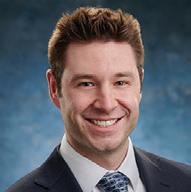
While moving through your career as a healthcare provider, there isn’t a single template for a financially healthy life. Let alone a fulfilling journey to retirement. It’s not an exact science. Life happens and there will always be twists and turns along the way whether it’s contract reviews, buying additional real estate, or selling a private practice. Having the wherewithal to at least understand the importance of reviewing your situation and making updates or course corrections, on a regular basis to keep you on track will keep you ahead of the game. As you continue on your professional journey, here are some tips for each career stage to help keep you financially nimble and fit.
For dentists or dental students, who are just starting out, you can view this period as some of the most important years to set you up for success. It’s said you can’t “win the race” to retirement in these early years of your professional career, but you can set yourself back years with both poor planning and financial decisions. It’s not sexy but it’s best to keep things simple.
While reading through this article you may be shaking your head at the simplicity of this suggestion for financial health, but it is the single most important fundamental to understand. If you are someone who struggles with spending, or overspending at that, it is one of the largest hurdles you will need to overcome to meet your financial objectives. The Rule of 50/51 states, “If you make $50 (or have $50 coming into your household), do not spend $51.” Seems simple right? However, most of people struggle with this rule. We are a nation that runs on debt and deficit. A couple of statistics for the US, in this year alone:
• $17.1 Trillion in household debt
Whether you’re an early or mid-career dentist, you will be targeted with direct ads or agents trying to sell you disability and/or life insurance. The tactic is so frustrating it mostly leads to young professionals never wanting to discuss either coverage or the topic of it again until they reach mid to late career. However, they are both fundamental to creating a healthy financial plan. For life insurance, coverage is typically only needed if you are trying to protect a spouse or loved one in the event of one of the following circumstances:
1. Debt that isn’t federally obligated.
2. Income supplementation for your partner or spouse.
3. Mortgage: your place of residence will be paid off through the death benefit.
Jeff Feakes is an Account Executive for COPIC Financial Service Group. His niche is working with medical residents and dental students. He meets with these rising health care professionals and provides strategies to help consolidate their debt and jump-start their financial goals. He helps clients with financial services products, as well as disability and life insurance.
• $12 Trillion in mortgages
• $1.6 Trillion in auto loans
• $1 Trillion in credit card debt
However, the really harrowing statistic is, “since 2020, 36% of Americans hold more credit card debt than actual savings.”1 As a dental student, resident or early career dentist—highlight, earmark or do something to remind yourself of that. Be vigilant and understand the importance of your personal spending habits.
4. Education Planning: if it is your intent to cover your child’s/children(s) high education. If none of these situations apply to you, your need for life coverage is low and you probably don’t need to focus on life insurance at this point (but things do change so keep it in the back of your head). Disability insurance may be the most important to hold especially as a dentist. This particular coverage protects your income and is traditionally designed to protect you until your projected age of retirement. When discussing this with mid-career dentists, it is traditionally compared to, “shifting the job lotto.” If you are a professional between the ages of 35-40, you have two possibilities:
1. For the next 25 years you have “won” the ability to collect $10M. But, there is a 25% chance that it could be lost, taken away or payment could be altered at any point in these 25 years.
2. Or, in the next 25 years you have 100% certainty that you will collect $9.7M.
That is disability insurance in a nutshell. Now let’s review those scenarios in terms of income protection. Statistically, for professionals starting at age 35, there is a 25% chance of a disabling event that will prevent you from working in some capacity2, as seen in scenario one. Additionally, the average cost of this protection is about 3% of your paycheck, which is illustrated in scenario two.2 Even if the average cost of protection doubled when viewing the benefit as a lottery pay-out, there
isn’t much of a case for not proceeding with option two in a risk/reward scenario. As a society, we have been wired to avoid insurance due to excess advertisements and pushy sales tactics.
Congratulations, as a late-career provider, you’re traditionally in your highest income-earning years. Protections have been accounted for and saving to meet your financial objectives becomes paramount. You may have been contributing to an employersponsored (or self-sponsored) retirement account for years but having a thorough understanding of the tax implications you will face when the time comes to withdraw from the account becomes one of the more fundamental planning strategies at this stage. It’s statistically been shown that
for professionals with more than 2-3 different retirement accounts, which hold different taxation upon withdrawal, there is a 20% greater likelihood of having a higher portfolio return based upon income drawn from those accounts during down years in the market.3 Or more simply put, the diversification in retirement accounts allows you to systematically pull retirement savings that preserve retirement assets for a greater period.
Remember, there’s no exact science to a financial planning journey. But there is a framework you can follow to make life easier and reaching your goals more attainable. Whether you’re an early, mid or late career dentist, a combination of simplifying your financial life while working with reputable and trustworthy sources will eventually yield positive results. The goal is to become financially independent at whatever stage you see fit in your life.

Frank, a 62-year-old man with an intellectual disability, has been through many challenges in his life. Living in northeastern Colorado with his partner and caregiver, Linda, he found solace in participating in the Special Olympics and team sports like bowling. Despite his joyful and active lifestyle, there was one aspect of Frank's health that needed attention—his oral health.
Since birth, Frank has lived with an intellectual disability, which has made certain aspects of life more difficult for him. In addition, over the years his oral health had deteriorated, leaving him with numerous broken and decayed teeth. This not only affected his ability to eat a regular diet, but it also caused him considerable pain.
Unfortunately, he was unable to afford the necessary care to improve his dental health. Frank and Linda's income comes from Social Security Disability benefits and although they work part-time jobs, they struggled to make ends meet. The comprehensive care that Frank needed seemed out of reach.
Thankfully, Frank was referred to Dental Lifeline Network’s Donated Dental Services (DDS) program by the Eastern Colorado Service for the
Developmentally Disabled. Through the DDS program, Frank was referred to a volunteer dentist who provided the comprehensive dental care he needed at no charge.


Frank’s volunteer, Dr. James Armbruster, conducted 22 extractions and smoothed his jawbone and fitted him with a full upper and lower denture that was generously donated by Master Craft Dental Lab. With the help of both volunteers, both Frank’s dental health and his smile were restored.
“I am very excited about my new teeth and cannot wait to eat healthier and have pizza and salads!” Frank said of his newly restored mouth.
Since the program’s inception in 1985, more than 13,400 patients in Colorado have received care through the DDS program. There are currently many patients like Frank still on the Colorado waitlist who are in desperate need of care. Visit WillYouSeeOne.org to learn more about the program and become a volunteer today to help those who otherwise will be unable to access dental care. Sign up today by scanning the QR code below.
We often get asked how to calculate the practice EBITDA (Earnings Before Interest Tax Depreciation and Amortization). Here is a simple guide to help you determine this for your practice.
Practice's Total Collections - Overhead - Dentist Compensation at FMV = EBITDA

If a practice's total collections are $1,200,000, and the overhead is $840,000, the net income equals $360,000. And if the doctor's compensation is $288,000 then the EBITDA is $72,000.
Practice's Total Collections are the total practice collections (not production).
Overhead typically includes staff wages, staff benefits, supplies, office expenses, staff contract labor, telephone, computers and IT services, postage, merchant services, advertising, uniforms, laundry, lab, rent, NNN or CAM, personal property tax, etc.

Operative Production is the cost of what you would pay an associate doctor to perform the operative production in the practice.
In our example, we take the practice’s total collections of $1,200,000 and subtract the practice overhead (this includes fixed and production expenses) of $840,000 to get a net of $360,000
Overhead does not include the following: owner's wages, associate wages, family wages, travel, auto, meals and entertainment, continuing education, professional memberships, or any other expense that a buyer would not have to assume to continue conducting business in the same manner.
Next, we subtract the cost of what you would pay an associate doctor to perform the operative production in the practice. So, if your hygiene production is 20% or $240,000 and your operative doctor production is 80% or $960,000 then you pay a doctor 30% of collections ($960,000*0.30) = $288,000
Take your net income less doctor wages to get your EBITDA | $360,000 - $288,000 = $72,000

(303)

We hope this example is helpful. Please reach out if you need an opinion of value or appraisal for your practice if you are considering selling in the next 1-5 years.
“Selecting someone to assist with the transition from a dental practice of 48 years is a difficult decision. I can't think of a more capable person than Marie Chatterley to handle this process. It was reassuring to me that she had the answers to virtually all my concerns. Her experience made me completely comfortable with the process. I will be forever indebted to her.”
Ivan Naiman D.D.Scdaonline.org/wellness
Free and confidential counseling services for everyday life situations including stress, anxiety, depression, family situations, drug and alcohol abuse, relationships, death and grief, and work-related topics.
No matter your wellness goals, MINES can help. You have:
• 4 professional wellness sessions with a personal coach.
• 4 sessions of parental coaching and lactation consults.
• 6 week Virtual Reality smoking cessation program.
Practical legal and financial assistance that includes:


• Free 30-minute consult per legal/financial matter.
• 25% discount on select services after the initial consult.
• Use your EAP sessions for financial/Medicare coaching.
Sign on to PersonalAdvantage to access:
• Online Resource Library full of articles, assessments, training, and financial tools designed to beat stress and improve work/life balance.
• eM Life mindfulness service for live sessions, community support, and expert instructors that can help you live a healthier, more balanced life.
*Per Life Situation: A distinct, separate and new life event. A MINES case manager will review requests for additional sets of sessions. Continuation of counseling is not a separate, distinct and new life event. This guide is for informational purposes only. Call MINES for details.
As an member of the CDA, you and each member of your household have up to 5 counseling sessions per life situation.*

Counseling is available by video, phone, text or face-to-face.

ACCESS SERVICES: Call MINES at 800-873-7138 intake.minesandassociates.com
Company Code: codental
Your company code is used to register for online services as well as complete online requests for service. Log on today to access your services and mindfulness app.

Free, Confidential Support 24/7
MINES and Associates | 800-873-7138 | intake.minesandassociates.com
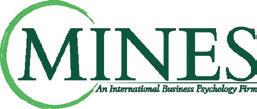 Use the CDA’s Member Assistance Program: Mental Healthcare for You & Your Household
Use the CDA’s Member Assistance Program: Mental Healthcare for You & Your Household
Dogs are good listeners... but aren’t typically known for giving advice

What influenced your decision to open a private pediatric dental practice? My father was a pediatric dentist, and I spent my summers working at his practice. I love working with kiddos and getting to have fun and joke with them every step of the way. When I moved to Denver more than 10 years ago, I knew I wanted to open Sunrise Pediatric Dentistry in Cherry Creek. It's been so rewarding to watch my patients grow (it happens so fast) and develop healthy associations with the dentist so they can be empowered to develop healthy oral health habits for life!
How do you balance running a successful dental practice and recharging with your family? I wish I could say I had this down. I think whenever you feel like you’ve finally achieved a balance, something comes up and you have to learn to roll with the punches. I have an amazing team at the office who I can truly rely on, which is a huge help in being able to “turn it off” at the end of the day. I recommend spending lots of your time developing an amazing team and learning everyone’s strengths so you can delegate as much as possible. I wouldn’t be where I am without my team and family. I do lots of yoga and try to practice mindfulness. I think it’s really important to be in touch with how you’re feeling and when burnout starts to creep in, figure out ways to work smarter, not harder so you enjoy your downtime.
You have a heart for philanthropy—can you tell us a little about why you choose to give back and any impact it has on your career? Giving back is really huge for me. I was a board member for Kids in Need of Dentistry (KIND) for many years and I’m so grateful for that opportunity. There are so many kids and young adults without access to care right here in our backyard. I’ve treated many kiddos pro bono and am proud to have helped this organization develop several initiatives that impact the Denver Metro area directly. If you haven’t heard about KIND or gotten involved, I encourage you to visit kindsmiles.org and learn more.
On this note, what do you see as one of the biggest obstacles to care, especially for children, and how can individual dentists make a difference? Often it can be the parents. Kids are moldable and I feel I can typically overcome any obstacle I run into regarding the child. Adults are harder! It can be really challenging to overcome people’s perceptions and fears about dentistry, particularly when they’ve had negative experiences in the past. I work hard to gain the trust of our patient families and sometimes it can take time for them to understand that I‘m trying to help them do what is best for them and their child. I think we can make a difference by understanding that everyone has a unique perspective and giving people space to make an informed decision with respect is an important part of what we do when we educate our families.
What is one thing you wish your patients (or their families) understood about dentists (or dentistry)? We know what we’re talking about, so trust us. There is so much training and scientific literature that backs up our recommendations. We always strive for perfection and want to help our patients. It’s unfortunate that patients can have the perception that we are only here to make money and that is what drives our treatment plans. Developing trust is so critical to patient care and it’s something I continue to work on. It’s also important to realize that you won’t be able to change everyone’s opinions and that’s fine too.
Is there a piece of advice that you regularly return to in your personal or professional life? Embrace change! As dentists, we are A-type to the max and I know personally, having a sense of control feels so important. Maintaining lightness and a sense of humor is critical. Working with kids, it’s easy to fall back on that, but it doesn’t come naturally to us. A yoga teacher and good friend of mine always said, we should try to be more like kids! They are the best at living in the moment, always having a sense of playfulness and wonder in how they look at the world.
What would you be doing if you were not a dentist?
I LOVE to cook. I could definitely see myself running a kitchen or opening a restaurant in another life.
On June 9 the Colorado Dental Association (CDA) hosted its 136th Annual Session and House of Delegates meeting.
What do these formal words mean? And how have there been 136 of these annual sessions? Chances are, if you’re reading this, you fit into one of these three categories:
1. You’re a current voting CDA delegate or a past delegate and you know what all of these words mean.
2. You know of these words and their meaning, but you’ve never been to the meeting or registered to be a member of the governing delegation for the CDA.
3. You’re wondering if you’re missing out on some sort of dental Game of Thrones opportunity.
Number 3 people—you are missing out. While we have had a sword appear in the House of Delegates (not kidding), there are no kingdoms battling for the Iron Throne. Rather there are 100 CDA members having moderated discussion and debate on numerous topics affecting the dental profession. This room of dentists governs the CDA and directs the CDA in its future endeavors. If you are in the House of Delegates (and, by the way, any CDA member is welcome to serve as a delegate), you tell us, the CDA, how to defeat dragons and give us future directives.
A membership organization means the members collectively run the association. Meetings like this are necessary so CDA can work best for you.
At this year’s House, we had a full slate of business, which comes in the form of resolutions. There were 34 resolutions that ranged from dental assistants scope of practice to anesthesia permits to third party payor studies to CDA bylaws changes.
You can read the full transactions report here: cdaonline.org/hod
For a quick summary of highlights and big decisions, see below.
Molly Pereira is the executive director of the Colorado Dental Association. She has served the CDA for the past 21 years in various roles including communications, government relations, event planning and access-to-care charitable programs.

• There were 23 resolutions tied to the Sunset Review of the Colorado Dental Practice Act. A Sunset Review usually happens every 10 years; it is a review and update of every Colorado law that governs dentistry. It is a BIG deal. A CDA committee of dentists reads literally every line of the Colorado Dental Practice Act and makes suggestions for edits and changes. These suggestions come to the House of Delegates so you can vote to tell the CDA how we should represent you in front of DORA and the legislature.
• Resolution 32-23-HS brought substantial discussion and debate regarding an increased scope of practice for dental assistants in reaction to the workforce shortage. This resolution directs the CDA to submit a Sunrise Review application to DORA addressing the expansion of dental assistants’ scope of care. The application is due at the end of the year, and once submitted, DORA will consider whether authorizing dental assistants to perform some expanded functions like
scaling would require licensing, registration or certification from the state of Colorado. Dental assistants are not currently regulated by the state. The Sunrise Review would also likely consider any education or supervision requirements for this change. The CDA Dental Assistant Scope of Care Task Force has begun work on this application, alongside the CDA Government Relations Council. The actions made by the CDA House of Delegates do not authorize dental offices to allow dental assistants to practice outside of their limited scope at this time. Rather it directs the CDA to engage DORA to consider this provider scope concept.
• Resolution 31-23-B and Resolution 35-23-B extended the work of the Dental Assistant Scope of Care Task Force and the Workforce Task Force, respectively. Resolution 33-23-B created a new task force to focus on third party payor issues to aid the CDA’s legislative policy initiative planning.
• The CDA Bylaws were changed by Resolution 26-23-BS and Resolution 29-23-B. Resolution 26-23-BS modified the bylaws by
allowing the CDA Board of Trustees to remove a board member for cause, such as violating the CDA Code of Conduct or acting in a manner that doesn’t represent the best interest of the association. Resolution 29-23-B incorporated the Arkansas Valley Dental Society into the Southeastern Colorado Dental Society, reducing the number of local dental society components to 10.
• Resolution 27-23-B focused on mental health, creating a CDA priority and commitment to protecting the well-being of our members. Through the CDA Member Assistance Program (cdaonline.org/ wellness), the association already provides a robust free therapy service to members and their household members. This resolution simply strengthens our commitment to this important topic.
The CDA House of Delegates meets every year and we need to hear from members at this meeting so we can best advocate on your behalf and provide services to help you professionally and personally. We’re stronger together and I encourage you to take advantage of the many benefits you receive as a member of organized dentistry.
RMDC is back with a new look, new speakers and new features!
January 18-20, 2024

SEPTEMBER 8
Botulinum Toxins (Xeomin, Dysport, Botox) and Dermal Fillers Training, Level 1
American Academy of Facial Esthetics
Mountain West Dental Institute
925 Lincoln St Unit B Denver, CO 80203
8:00am – 5:00pm
SEPTEMBER 8
TeamSmile with the Colorado Rockies
Coors Field
2001 Blake St
Denver, CO 80205
8:00am – 3:00pm
SEPTEMBER 9
Frontline TMJ & Facial Pain Therapy, Level 1
American Academy of Facial Esthetics
Mountain West Dental Institute
925 Lincoln St Unit B
Denver, CO 80203
8:00am – 12:00pm
SEPTEMBER 12
CPR & AED Training
CPR Choice
Mountain West Dental Institute
925 Lincoln St Unit B
Denver, CO 80203
6:00pm – 8:30pm
SEPTEMBER 16
MDDS Shred Event
Peebles Prosthetics
909 Wadsworth Blvd
Lakewood, CO 80214
9:00am – 12:00pm
SEPTEMBER 22-23
Colorado Mission of Mercy (COMOM)
Greeley Event Center
501 N 14th Ave
Greeley, CO 80631
OCTOBER 21
Grafting the Socket: Repairing the Simple and Complex
Dr. Brian Gurinsky
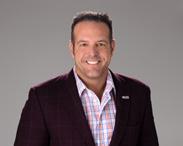
Mountain West Dental Institute
925 Lincoln St Unit B
Denver, CO 80203
8:00am – 3:00pm
OCTOBER 27
Twenty-First Century
Laser-Assisted Dentistry

Dr. Anthony Cardoza
Mountain West Dental Institute
925 Lincoln St Unit B
Denver, CO 80203
8:00am – 4:30pm
DECEMBER 2
Nitrous Oxide/Oxygen
Administration Training
Dr. Jeffrey Young
Mountain West Dental Institute
925 Lincoln St Unit B
Denver, CO 80203
8:00am – 4:00pm
JANUARY 18-20, 2024
Rocky Mountain Dental Convention (RMDC)
Multiple Speakers
Colorado Convention Center
700 14th St
Denver, CO 80202
HANDS-ON EVENT
APRIL 9
CPR & AED Training
CPR Choice
Mountain West Dental Institute
925 Lincoln St Unit B
Denver, CO 80203
6:00pm – 8:30pm
If you’re considering buying a higher-cost or luxury home, your best mortgage option could be a jumbo loan.
– Low down payment options
– Fixed- and adjustable-rate mortgages
– Lender-paid mortgage insurance programs available
– Financing for a wide price range of homes
– Portfolio loans for unique situations
– Primary residence, second homes and investment property financing
Beaux Selznic Mortgage Loan Office
3 03- 39 4- 7 075 o ffice
3 0 3 -588 -5101 c e beaux.selznick@usbank.co
N ML S # 59 5 3 2 3
Associate Owner Opportunity. Established practice in Basalt, CO. Perfect opportunity to live and work in the Roaring Fork Valley. Exponential growth opportunities. Please email resume and cover letter to: bsltdds@sopris.net.
Well-established general dental practice in the South Denver, CO 80232 area netting on average past three years $1.4M. Net revenue has increased ~10-12% each year over the past 5 consecutive years. 1400 sq ft with 5 fully equipped operatories. Limited insurance plans accepted. Dr. relocating. Contact Chuck Mastin at chuck@ mastinlaw.com or (303) 271-4876 for more details.
Room for Growth in General Practice for Sale in Littleton (CO 2309). Located in a highly desirable area of Littleton. GP practice for sale. Littleton, CO. Collections $650K, Potential for $1M in collections w/advertising. 4 OPS, 1,500 sq ft lease. Price $375,000; Dr works 2 days/wk. in each office. (2 locations.) Doctor retiring. ADS Precise Transitions, adsprecise.com, 303-875-8500, email: jed@adsprecise.com.
General Dental Practice for Sale (CO 2301). North Denver (Commerce City), 9 Ops, office is 2,160 sq ft. $1.8M in collections. Building for sale with practice. Dr. moving out of the area. ADS Precise Transitions, 303-759-8425, www.adsprecise.com, email: jed@adsprecise.com.
General Dental Practice in Denver, CO (CO 2213). Collections of $190K. This could be a Chart Sale or Practice sale. The practice occupies 1,700 square feet and consists of 4 operatories + 2 additional Ops opportunities. Price $95,000. For more info email: jed@adsprecise.com or call 303-875-8500.
Meticulously appointed and equipped OMS Practice in Boulder County, CO (CO 2128). Collections $861K, 4 ops w/ room to expand, 1,865 sqft, Sales price $399K. Don’t miss out! Established GP referral base, much less $ than a startup Great Opportunity & Price! Excellent location, Dr. retiring. ADS Precise Transitions, 303-759-8425 or jed@adsprecise.com.
Great opportunity to own Established General Dental Practice & Building in South Colorado Springs / Pueblo Area (CO 2127). Collections $350K, 3 OPS with opportunity for 2 additional OPS. 2,300 sqft. Located in a lovely bedroom community setting and operating on a short work week. Patient draw is from the front range and central mountains. Practice Price is $175K + Dental Office Building $375K. Dr Retiring. For more information please call 303-759-8425 or email jed@adsprecise.com.
General Dental Practice in Southwest Denver, CO (CO 2201). Great location! Collections of $1,1M Practice occupies 1,550 square feet and consists of 5 fully equipped operatories. Potential for an additional 1,600 sq ft adjacent to this office. Dr relocating. Price $600,000. For more info email: jed@adsprecise.com or call 303-759-8425.
General Dental Practice for Sale in Colorado Springs (CO 2124). Great opportunity to acquire a well-established practice in a great location. Collections $600K, Price $336K, 3 OPS (w/ room to expand), 1,500 sqft. Dr. Retiring. Practice Building is also for sale with practice. For more information, please call 303.759.8425 or email jed@adsprecise.com.
General Practice for sale in North Central Colorado (CO 2121). Occupies 1,100 square feet and consists of 3 fully equipped operatories. Doctor works two and half days a week. The office also includes a reception area, lab, sterilization area, staff lounge and a bathroom. The practice produces $510K in collections. For info contact jed@adsprecise.com or call 303.759.8425.
Great Opportunity: 30+ year established orthodontic practice for sale in an excellent location of highly desirable Boulder County, Colorado (CO 2116). Collections of $500K. Sales price $199K (only 40% of production). Tech is up to date including an iTero Element imaging system. Located in a Dr. owned 4-plex & occupies 1,400sqft with 4 chairs. Room for expansion. Doctor is retiring. For information email: jed@adsprecise.com or call 303-759-8425.
GP for Sale: Northeastern CO (CO 1735). 4 Ops, approx. $849K in collections, Price $249K (only 30% of Collections!). Stand-alone bldg. sold w/practice. Dr. retiring. For more information, please contact us at jed@adsprecise.com or call 303.759.8425. For more listings visit www.adsprecise.com.
OMS of Sale in Highly desirable Boulder County, CO (CO 2122) . Annual Collections $1.7M, 3 ops, Professional building, 1,800 sq ft, Sales price $895k. Great Opportunity & Price! Established customer base and much less expensive than a startup. Office Condo also for sale. Excellent location, Dr. retiring. ADS Precise Transitions, 303-759-8425 or jed@adsprecise.com.
Be an ally for someone suffering from tooth pain and contemplating pulling a tooth because of the cost of a root canal. We are offering root canal treatment for the price of an extraction ($102).
It’s a benefit for everyone. For your patients, they are saving their natural teeth while relieving pain. For you, it is optimizing treatment planning and timely intervention to address patients’ oral health needs and goals. Dentists looking to refer patients to this program can do so by emailing: sdmreferral@ucdenver.edu with promo code: ENDO21 .